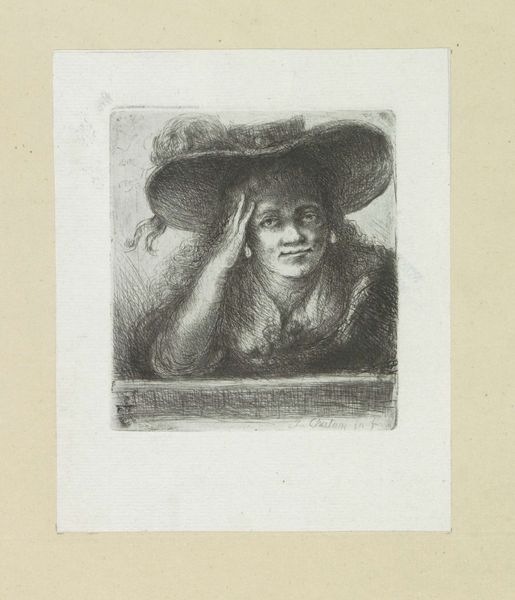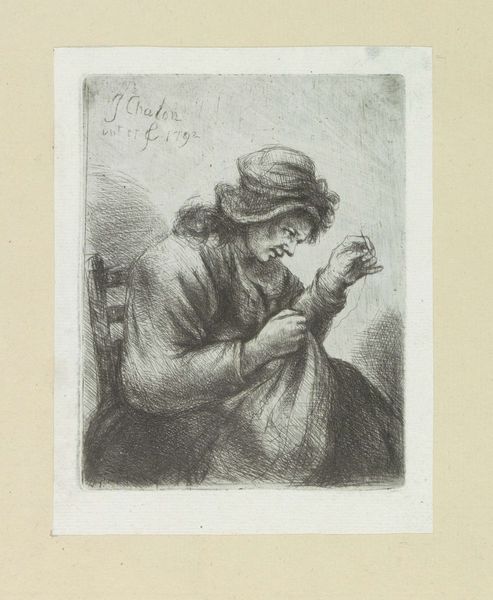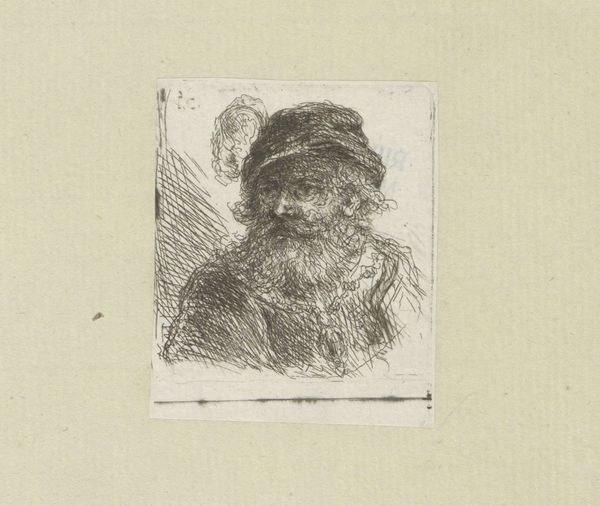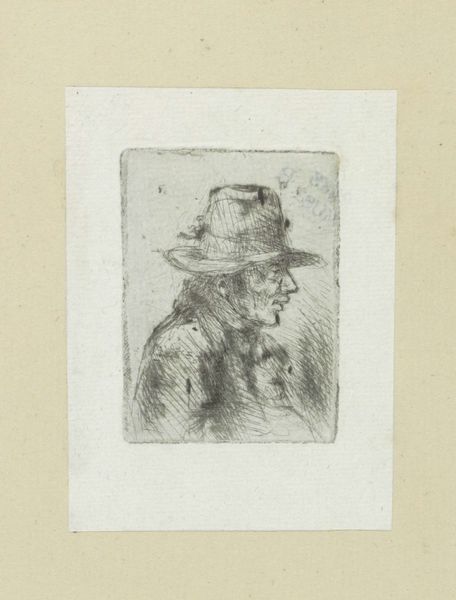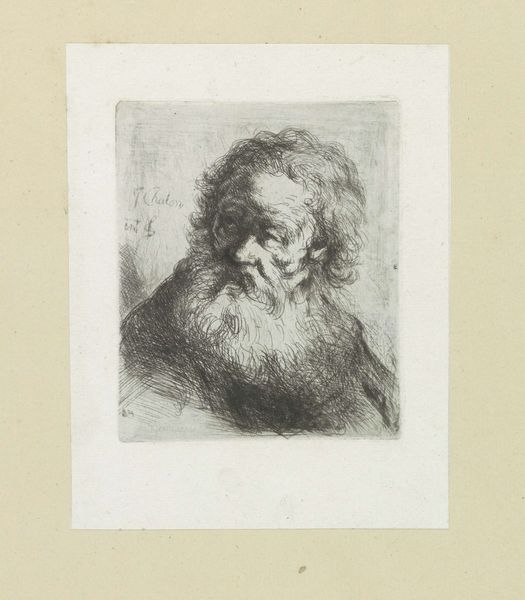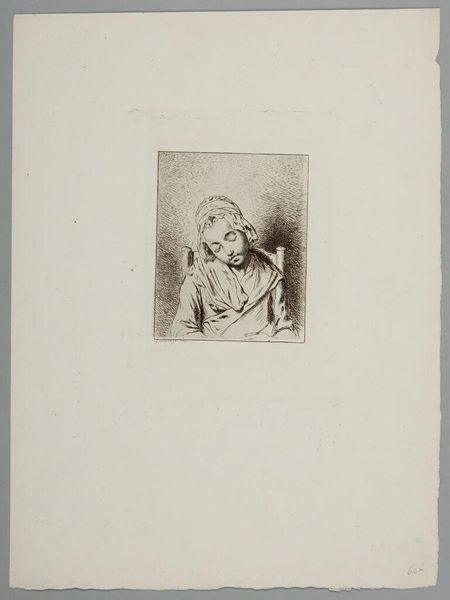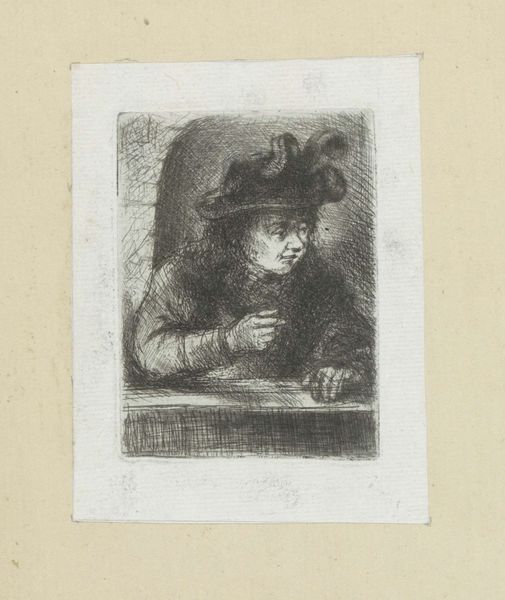
drawing, paper, pen
#
portrait
#
pencil drawn
#
drawing
#
neoclacissism
#
light pencil work
#
pencil sketch
#
charcoal drawing
#
paper
#
portrait reference
#
pencil drawing
#
white focal point
#
line
#
pen
#
portrait drawing
#
pencil work
#
history-painting
#
tonal art
Dimensions: height 109 mm, width 149 mm
Copyright: Rijks Museum: Open Domain
These "Twee mansportretten" or Two Male Portraits, were created by Jan Chalon in the 18th century, using a printmaking technique. Specifically, this is an etching, where the artist would have coated a metal plate with a waxy ground, drawn into it with a needle, and then submerged the plate in acid. The acid bites into the metal where the needle has exposed it, leaving an image that can then be inked and printed. Look closely, and you can see the delicate network of lines that define the sitters’ faces, clothes, and hair. Etching allowed for a relatively quick way to reproduce images. In this case, perhaps studies from life. It democratized image-making in its time, and reminds us that even seemingly straightforward portraits are shaped by available techniques and by the labor involved in their making. Chalon has made a virtue of the process, allowing the open, spare linework to speak for itself. The result has a freshness that transcends the centuries.
Comments
No comments
Be the first to comment and join the conversation on the ultimate creative platform.
